
Roots
There exists a whisper, a silent song carried on the very strands that crown our heads, echoing from distant generations. For those whose hair speaks in coils, kinks, and waves, this connection to the past is not merely poetic; it is a profound truth. The question arises, then, with a quiet urgency ❉ Can understanding the inherent genetic blueprints, the predispositions etched within our very being, truly reshape our approach to the care of textured hair?
It is a contemplation that invites us to journey beyond superficial treatments and trendy fads, to seek a deeper communion with our hair, a reverence for its ancestral lineage. This inquiry calls us to consider how the wisdom held in our genetic code, a legacy passed through time, might illuminate paths to care that honor the unique spirit of each strand.

The Ancestral Pattern
To truly grasp how genetic predispositions might guide our care, we must first recognize the deep, enduring patterns within textured hair itself. The distinct morphology of coiled and kinky hair, characterized by an elliptical cross-section and a curved, asymmetrical follicle, is a remarkable biological adaptation. This architecture, determined by a complex interplay of genetic factors, creates hair that is often drier and more susceptible to mechanical forces. Consider the journey of sebum, the scalp’s natural oil, from the root down the hair shaft.
On a straight, cylindrical strand, this journey is relatively unobstructed. On a highly coiled strand, the twists and turns present a far greater challenge, limiting the even distribution of protective oils along the fiber’s length. This physiological reality, written into our genetic makeup, underscores the persistent need for external moisture that has long defined care traditions across Black and mixed-race communities.
The genetic architecture of coiled hair, with its unique follicle shape and elliptical cross-section, inherently influences its moisture retention and strength.
Historical practices, passed down through families, through communities, and across continents, often centered on principles of hydration and gentle handling. These were not arbitrary rituals; they were empirical responses to hair’s manifest needs. Ancestors, without the benefit of genetic sequencing, observed their hair, understood its tendencies, and devised methods that intuitively addressed its inherent predispositions. The regular application of natural oils, the creation of protective styles that minimized manipulation, and the communal acts of cleansing and conditioning were all, in essence, a lived understanding of genetic influence.
They understood, in a practical sense, that their hair behaved differently, required different attention, and they adapted their methods accordingly. This living archive of knowledge, deeply rooted in centuries of observation and adaptation, forms the foundational lore of textured hair care.
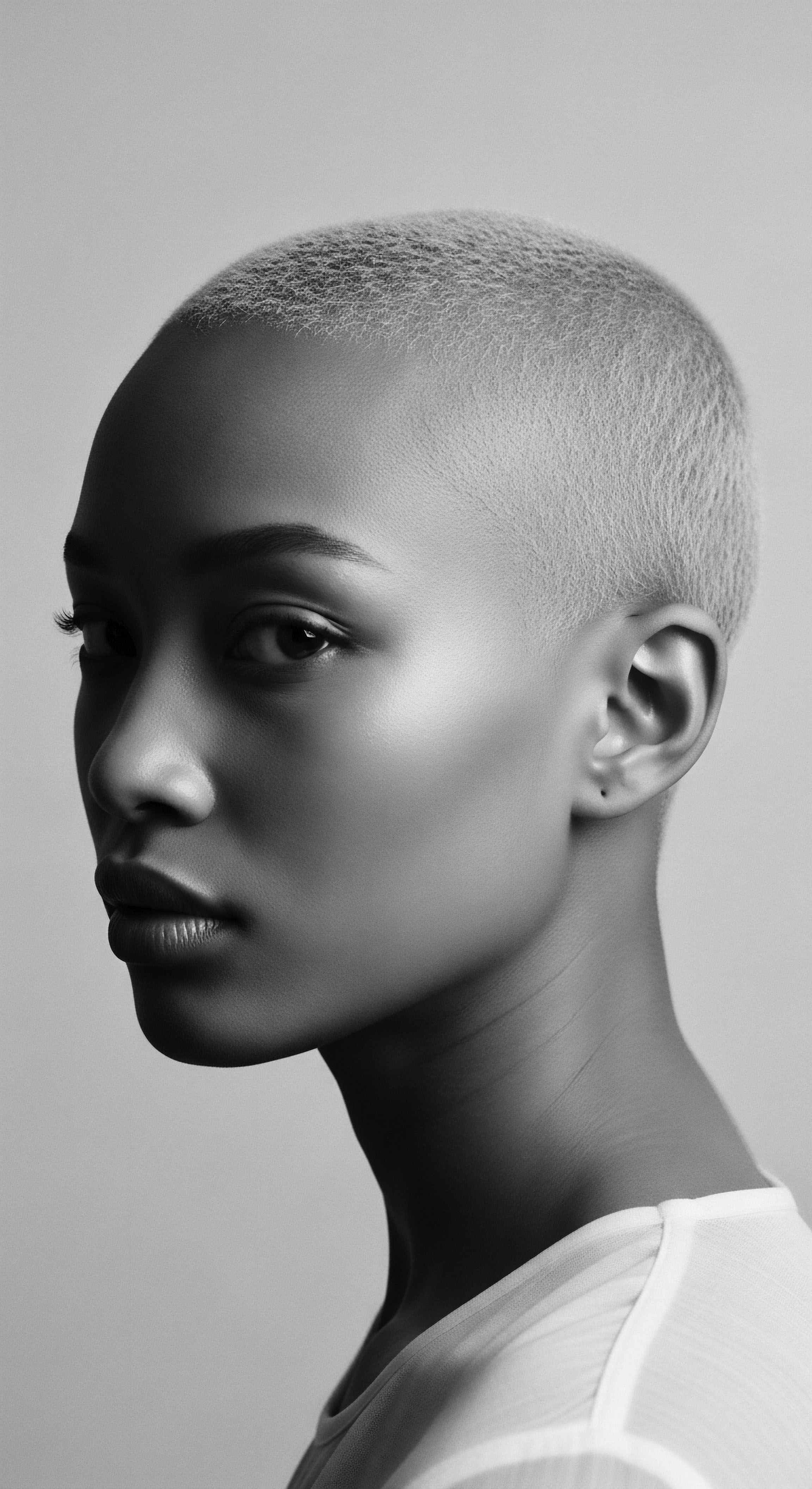
Hair Anatomy Echoes Ancestry
The very architecture of textured hair, from its microscopic structure to its growth patterns, carries the whisper of our genetic heritage. Scientific inquiry now allows us to observe these intricate details with unprecedented clarity. The hair shaft of highly coiled hair is typically flatter and thinner than that of straight hair, giving it a greater surface area relative to its volume. This increased surface area exposes more cuticle layers to the environment, potentially leading to faster moisture loss and making the strand more prone to tangling and breakage.
Furthermore, the point at which the hair emerges from the scalp is often angled, rather than perpendicular, adding to the curl’s inherent fragility at its very origin. These anatomical particularities are not random; they are the physical expressions of genetic instructions refined over millennia.
The concept of hair classification, while a modern construct, also carries historical echoes. Systems like those categorizing hair into types 3A to 4C, though sometimes limiting, attempt to categorize the spectrum of curl patterns, a spectrum heavily influenced by ancestral genetics. Early observers, long before formal categorization, recognized similar distinctions and adapted their grooming practices.
This is a testament to the enduring presence of these inherent hair traits. Understanding these basic anatomical truths—the legacy of our genes—becomes the first step in crafting care approaches that honor hair’s fundamental nature.
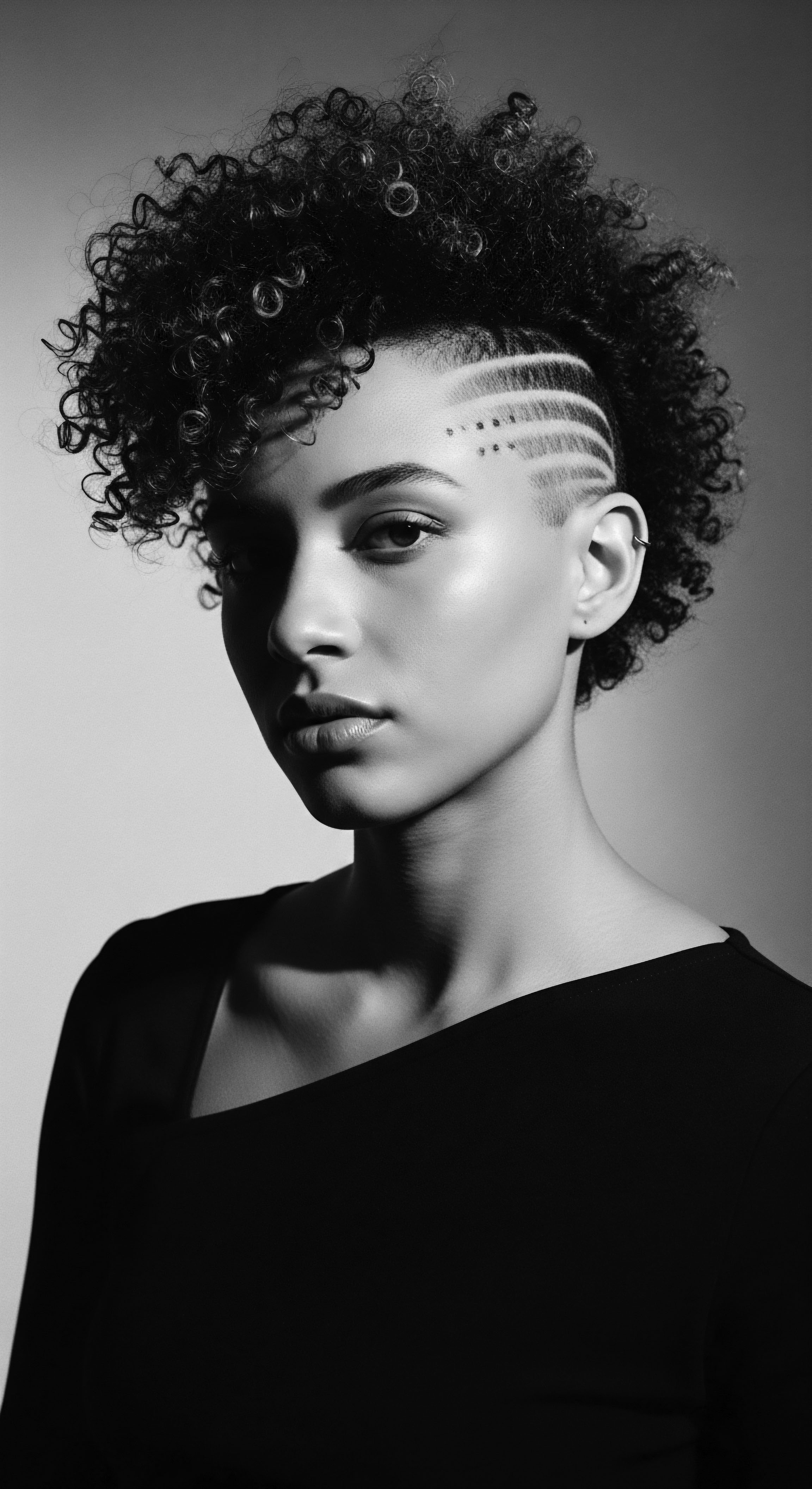
What Does Hair Follicle Shape Communicate About Ancestral Patterns?
The shape of the hair follicle itself offers a profound communication about ancestral patterns. Round follicles generally produce straight hair, while increasingly oval or ribbon-like follicles yield wavy, curly, and then highly coiled hair. In individuals with African ancestry, these follicles often exhibit a distinct, highly curved, and asymmetrical S-shape beneath the scalp. This curvature causes the hair shaft to grow in a spiraling manner, creating the characteristic tight coils we associate with Afro-textured hair.
The tight turns in the follicle also contribute to areas of thinning in the hair strand at each bend, rendering the hair more susceptible to breakage at these points. This knowledge, scientifically validated, provides a biological explanation for traditional practices emphasizing low manipulation and protective styles. The very structure of the follicle dictates the fragility of the strand. Recognizing this inherent predisposition allows us to move beyond trial and error, towards a care philosophy that respects the hair’s intrinsic vulnerabilities and strengths.
- Follicle Shape ❉ Dictates the curl pattern, from straight to highly coiled, influencing hair’s physical properties.
- Hair Cross-Section ❉ Varies from round to elliptical, impacting strand strength and light reflection.
- Hair Growth Angle ❉ The angle at which hair emerges from the scalp affects curl formation and vulnerability to friction.
Consider how Indigenous African communities often employed hair grooming techniques that prioritized scalp health and protective styling. These methods, while not articulated in genetic terms, inherently addressed the challenges posed by hair’s genetic predisposition. The use of specific plant-based oils and butters for lubrication and sealing, the intricate braiding and twisting to minimize daily manipulation, and the communal aspects of grooming all speak to a sophisticated, adaptive knowledge system.
This ancestral wisdom, passed through generations, demonstrates an intuitive understanding of how to work with hair’s natural, genetically coded inclinations, rather than against them. It highlights that an awareness of inherent traits, even without modern scientific tools, guides effective care.
| Characteristic Follicle Shape |
| Highly Coiled Hair (Ancestral Lineages) Elliptical to ribbon-like, S-shaped growth below skin |
| Historical Care Alignment Practices minimizing friction and tangling, e.g. braiding, twisting |
| Characteristic Moisture Retention |
| Highly Coiled Hair (Ancestral Lineages) Lower natural retention due to coil pattern |
| Historical Care Alignment Regular oiling, deep conditioning, sealing moisture |
| Characteristic Breakage Susceptibility |
| Highly Coiled Hair (Ancestral Lineages) Higher due to bends in shaft and cuticle lift |
| Historical Care Alignment Low manipulation styles, gentle detangling, protective wrapping |
| Characteristic Shrinkage |
| Highly Coiled Hair (Ancestral Lineages) Pronounced shortening upon drying |
| Historical Care Alignment Styling techniques honoring natural length, stretching methods |
| Characteristic This table offers a glimpse into how the inherent, genetically influenced attributes of highly coiled hair have shaped care traditions across generations, demonstrating a continuous, adaptive response to natural predispositions. |
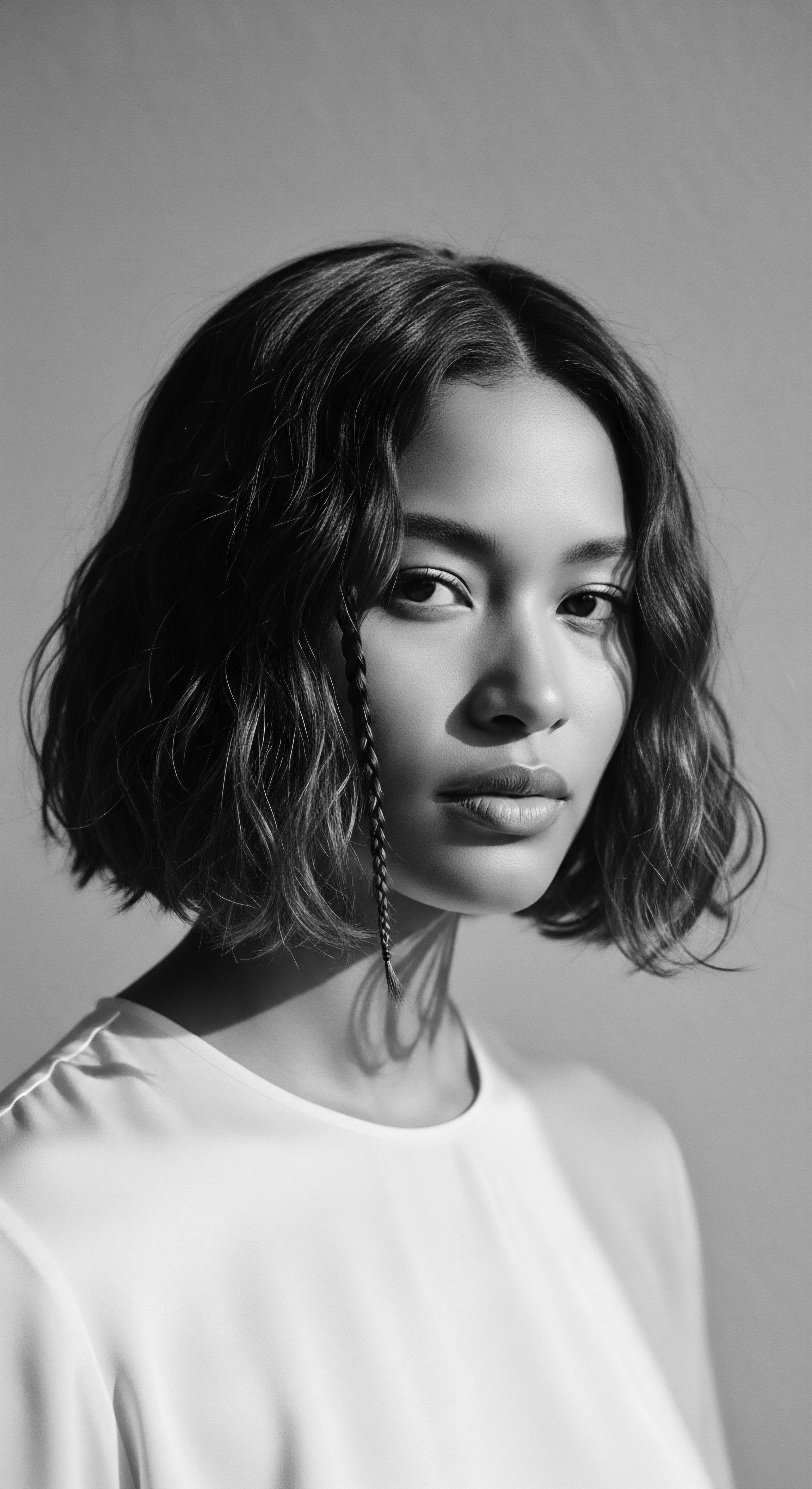
Ritual
The path from understanding genetic predispositions to reshaping our daily hair care practices is akin to transforming ancient insights into living rituals. If the genetic code is the silent blueprint of our hair’s being, then our routines become the conscious expression of that knowledge, interwoven with the heritage of care that has sustained communities for centuries. The routines we choose, the ingredients we apply, the very gestures of our hands upon our strands, can become acts of alignment with our hair’s deepest needs, informed by the wisdom passed down through time.

Care Aligning with Genetic Inclination
The unique structural characteristics of highly coiled, Afro-textured hair—its elliptical cross-section and the asymmetrical S-shape of its follicle—render it more susceptible to dryness and mechanical damage compared to straighter hair types. This intrinsic characteristic, which is genetically determined, aligns with ancestral care practices that intuitively prioritized hydration, gentle handling, and protective styles. This suggests an implicit, generational understanding of hair’s needs, predating modern genetic science. For instance, the traditional practice of regularly oiling the scalp and hair, prevalent in many African cultures, serves to compensate for the reduced ability of natural sebum to travel down the curved hair shaft, a direct consequence of its genetically determined morphology.
This practice of generous oil application forms a protective barrier, reducing moisture loss and enhancing the hair’s suppleness, thereby mitigating the genetic predisposition to dryness. (Liu et al. 2018)
Ancestral care practices, often developed through generations of lived experience, offer a compelling demonstration of how humans intuitively responded to the inherent, genetically determined characteristics of textured hair.
When we approach our hair, acknowledging its inherent genetic predispositions, our choices become more precise, more nurturing. This translates into a care regimen that moves beyond mere cleansing, extending into a philosophy of replenishment and protection. The tight coiling means each strand is a series of bends, creating points of vulnerability where the cuticle layers can lift, leading to increased porosity and reduced strength.
Understanding this guides us toward low-lather cleansers that preserve natural oils, and deep conditioners that penetrate beyond the surface, delivering moisture directly to the thirsty cortex. This is not just about what products we use; it is about the philosophy of care that underpins our choices, a philosophy that respects our hair’s inherent structure.

Honoring Protective Styles and Their Legacy
Protective styling, a cornerstone of textured hair care, finds a profound connection to genetic predispositions. Styles like braids, twists, and locs, deeply rooted in African heritage, minimize daily manipulation, reduce exposure to environmental stressors, and protect fragile ends. From ancient Nubian queens whose intricate braids symbolized status and identity, to the cornrows that served as maps for escape during the transatlantic slave trade, these styles were more than aesthetic choices. They were acts of preservation, of resilience, and of cultural continuity.
The coiled structure of hair means it is more prone to tangling and knotting, especially when left unbound. By gathering and securing the hair, these ancestral styles inherently guarded against mechanical stress, preventing breakage and allowing for length retention. This wisdom, passed through generations, reveals an unspoken understanding of hair’s inherent fragility—a fragility tied to its genetic blueprint. Modern scientific understanding validates these time-honored techniques, illustrating how ancestral wisdom often aligns with biological realities.
Consider the practice of oiling and buttering the scalp and strands. In West African traditions, shea butter and various plant oils have been used for centuries to condition and protect hair. These practices directly counter the natural tendency of coiled hair to be drier due to its structural shape, allowing indigenous communities to maintain hair health in diverse climates. This speaks to a care approach that, while not explicitly genetic, implicitly responded to the hair’s unique, inherited characteristics.
- Cleansing Methods ❉ Moving towards gentle, moisturizing washes that respect hair’s natural oils.
- Deep Conditioning ❉ Frequent, intensive treatments to provide sustained hydration, addressing moisture loss.
- Protective Measures ❉ Prioritizing styles that shield hair from environmental and mechanical damage.
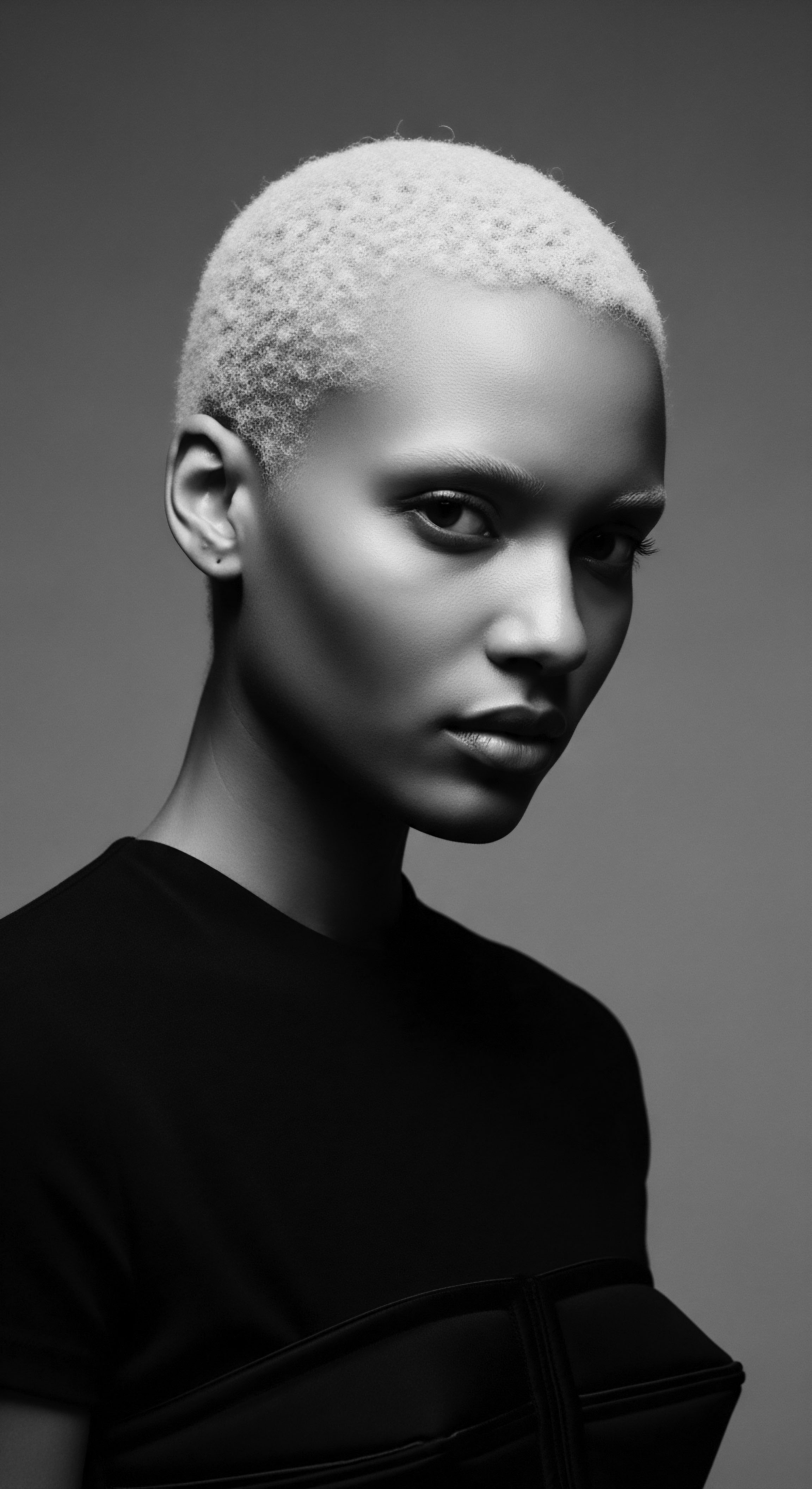
Nighttime Sanctum and Ancient Wisdom
The ritual of nighttime hair protection is a practice that resonates deeply with ancestral wisdom, its significance amplified by an understanding of textured hair’s genetic makeup. For many with highly coiled hair, simply sleeping on a cotton pillowcase can lead to friction, absorbing precious moisture and causing tangles and breakage. This is especially true for hair that is genetically predisposed to dryness and fragility. The use of silk or satin head coverings—bonnets, wraps, scarves—is not a modern invention.
Historical records and oral traditions recount the use of head wraps in various African cultures not only for adornment and social signaling but also for practical purposes, including hair protection. These coverings created a smooth barrier, reducing friction against coarser fabrics and helping to preserve the hair’s moisture and structural integrity throughout the night. This practice, passed through generations, serves as a testament to an intuitive, collective understanding of how to mitigate daily wear and tear on genetically vulnerable hair. It is a subtle yet powerful daily ritual, linking current self-care to the continuous line of ancestral knowledge.
The careful selection of ingredients also plays into this ritual. Ancestral practices often involved the use of local botanicals known for their conditioning and strengthening properties. For example, the use of aloe vera, hibiscus, and various types of clay in different African traditions for hair masks and washes.
These ingredients provided cleansing without stripping, and conditioning that supported the hair’s natural elasticity, inherently beneficial for hair with complex coiling patterns. The modern rediscovery of these traditional ingredients, often celebrated in natural hair communities, bridges the gap between scientific understanding of their molecular benefits and the time-honored wisdom of their use.

Relay
The journey of understanding genetic predispositions and their influence on textured hair care extends beyond individual routines, unfolding into a relay of knowledge passed between generations, cultures, and scientific disciplines. This is where the profound implications of our heritage truly come into view, as modern science begins to explain the ‘why’ behind practices that have sustained communities for centuries. The exploration delves into the intricate interplay of biological inheritance, cultural practices, and contemporary understanding, creating a holistic view of hair care that is both deeply personal and universally resonant within the textured hair community.
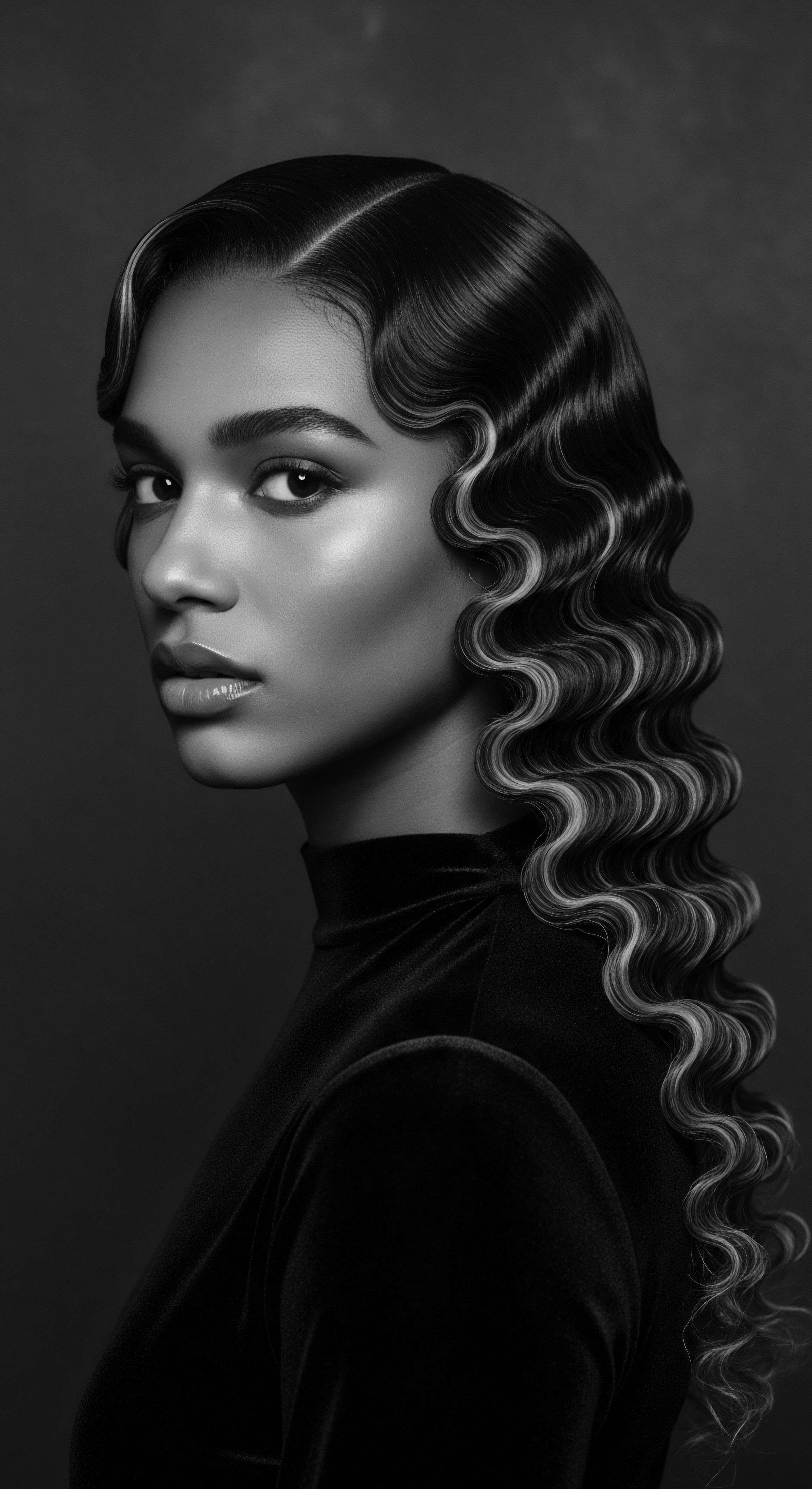
Unlocking Hair’s Molecular Blueprint
The molecular blueprint of textured hair, long observed through its physical characteristics, is gradually yielding its secrets to genetic inquiry. While hair texture is a polygenic trait, influenced by multiple genes, significant progress has been made in identifying specific genetic markers. For instance, genome-wide association studies (GWAS) have shed light on a range of genetic loci associated with hair shape variation across human populations. One such comprehensive meta-analysis involved 28,964 subjects from nine cohorts of diverse geographic origins, identifying several novel loci influencing hair shape.
(Liu et al. 2018) This research, while complex, underscores the multifaceted genetic architecture underlying textured hair. The precise shape of the hair follicle, which dictates the curl pattern, is fundamentally determined by inherited genes. Highly curved follicles, prevalent in populations of African descent, produce hair shafts that are more elliptical in cross-section and display greater torsion.
These structural characteristics, directly linked to genetic instruction, contribute to the hair’s inherent tendencies towards dryness, fragility, and susceptibility to breakage. Understanding these genetic predispositions provides a scientific lens through which to view ancestral care practices, recognizing their efficacy not as mere coincidence, but as an empirical response to inherent biological realities.
Genetic studies now illuminate the multi-gene architecture behind textured hair’s unique characteristics, providing scientific validation for long-standing ancestral care practices.
The knowledge that specific gene variants influence the shape of the follicle, and by extension, the degree of curl, empowers a more informed approach to hair care. This moves beyond broad generalizations to a more tailored understanding. If a particular hair type is genetically predisposed to low porosity, for example, then ancestral practices involving steam or heat in conjunction with product application (such as sitting by a fire while oils are applied, or using warm water rinses) gain a new scientific dimension. These historical methods would have intuitively aided in lifting the cuticle, allowing for deeper penetration of conditioning agents, a process now understood through the lens of molecular biology and genetic predisposition.

How Do Environmental Adaptations Reflect in Hair’s Genetic Code?
Environmental adaptations, honed over countless generations, are subtly etched into hair’s genetic code, manifesting as structural predispositions that once served crucial survival functions. The tightly coiled hair of many African populations, for instance, has long been theorized to provide superior thermoregulation in hot, sunny climates. This dense, coiled structure creates a natural insulating layer, protecting the scalp from intense solar radiation while allowing for air circulation to facilitate cooling through sweat evaporation. This contrasts with straighter hair types, which may lie flat against the scalp, trapping heat.
The genetic variants that contribute to this coiled morphology thus represent an evolutionary advantage, ensuring comfort and survival in specific ancestral environments. These adaptive genetic predispositions then present themselves in the modern context as specific care requirements. Hair that is designed for environmental protection may require specific attention to moisture retention and structural integrity, challenges that were intuitively met by ancestral practices. The use of natural oils and butters for protection against sun and dryness, and the development of intricate braiding styles that both adorned and shielded the hair, were not only aesthetic or cultural expressions; they were responses aligned with hair’s biological mandate.
- Thermal Regulation ❉ Tightly coiled hair can provide insulation and scalp protection in harsh climates.
- UV Protection ❉ Denser, coiled hair offers a natural barrier against solar radiation damage.
- Moisture Retention Challenges ❉ Coiled structure impedes natural oil distribution, leading to increased dryness.

The Living Library of Ancestral Wellness
Ancestral wellness philosophies, woven into the very fabric of daily life, present a living library of knowledge for textured hair care, extending beyond mere product application. This includes the understanding that hair health is inseparable from overall well-being—a concept often echoed in traditional African healing systems. The belief that what nourishes the body also nourishes the hair, for instance, guided dietary choices and the use of herbal remedies.
The practices of communal grooming, often accompanied by storytelling and shared wisdom, reinforced not only physical care but also psychological and spiritual connections to hair as a marker of identity, family, and heritage. This collective wisdom, empirically gathered over generations, implicitly acknowledges hair’s inherent properties, many of which are genetically defined.
Consider the emphasis on internal health for hair vitality. In many traditional African societies, the consumption of nutrient-rich foods and the use of specific medicinal plants for internal purification were considered integral to maintaining lustrous, strong hair. While modern science can now identify the vitamins, minerals, and proteins responsible for hair growth and resilience, ancestral communities understood the outcome without the molecular explanation.
This holistic perspective, prioritizing a balanced inner state, is a powerful complement to external care guided by genetic understanding. It demonstrates that true hair wellness, particularly for textured hair, is a symphony between inherited predispositions and intentional, heritage-informed care.

Reflection
To stand at this vantage point, looking back at the long journey of textured hair care from its ancient roots to its modern scientific explanations, is to witness a profound continuity. Can understanding genetic predispositions truly alter our approach to textured hair care? The answer resonates with a quiet, yet powerful, affirmation. It does not so much alter as it deepens, validates, and refines.
Our inherent genetic makeup, the very blueprint for the coils and kinks that crown so many, has always dictated the fundamental needs of this hair type. From the ancestral practices of meticulous oiling and protective styling, passed down through the ages, we find an intuitive response to these inherent predispositions. These were not random acts; they were born from generations of observation, of intimate knowing, reflecting an unspoken wisdom about the hair’s unique characteristics. When modern science illuminates the elliptical cross-section, the curved follicle, and the challenges of sebum distribution, it simply provides the language for what our forebears understood through lived experience and careful attention.
This journey compels us to view our textured hair not as a challenge to be overcome, but as a living legacy, a testament to resilience and beauty. The ‘Soul of a Strand’ whispers that our care, when informed by both genetic insight and ancestral wisdom, becomes an act of profound connection to our past, present, and future, ensuring that the vibrant heritage of textured hair continues to flourish in all its glory.

References
- Liu, F. et al. (2018). Meta-analysis of genome-wide association studies identifies 8 novel loci involved in shape variation of human head hair. Human Molecular Genetics, 27(4), 748-759.
- Davis-Sivasothy, A. (2011). The Science of Black Hair ❉ A Comprehensive Guide to Textured Hair Care. SAJA Publishing Company.
- Khumalo, N. P. et al. (2019). The what, why and how of curly hair ❉ a review. Proceedings of the Royal Society A ❉ Mathematical, Physical and Engineering Sciences, 475(2222), 20180479.
- Cloete, E. et al. (2022). The Genomic Variation in Textured Hair ❉ Implications in Developing a Holistic Hair Care Routine. Cosmetics, 9(6), 116.
- Hrdy, S. B. (1986). A study of the human hair follicle. Journal of Investigative Dermatology, 87(1), 1-8.
- Chapman, S. J. et al. (2013). Hair ❉ a review of the science. Experimental Dermatology, 22(5), 310-323.
- Shimomura, Y. & Christiano, A. M. (2010). Biology and genetics of hair. Dermatologic Clinics, 28(1), 17-32.
